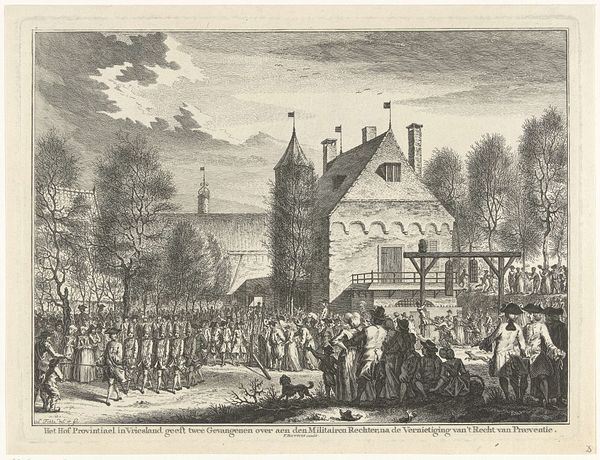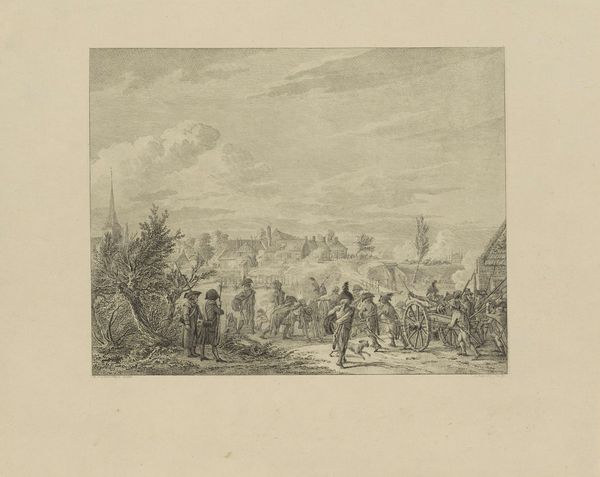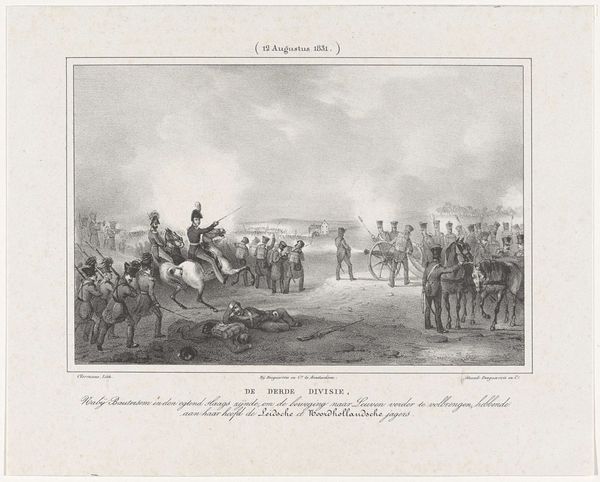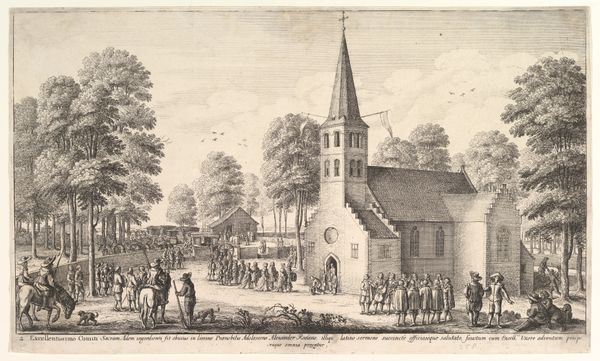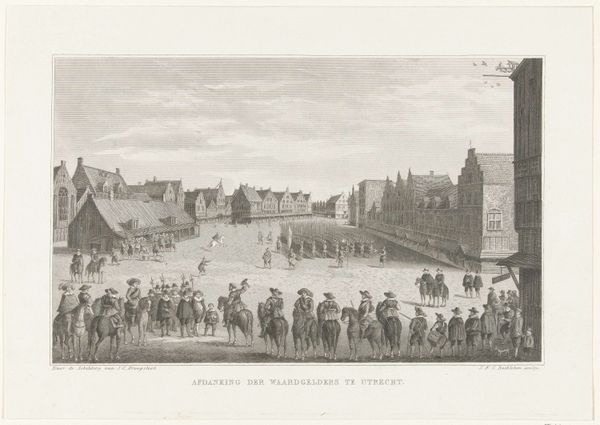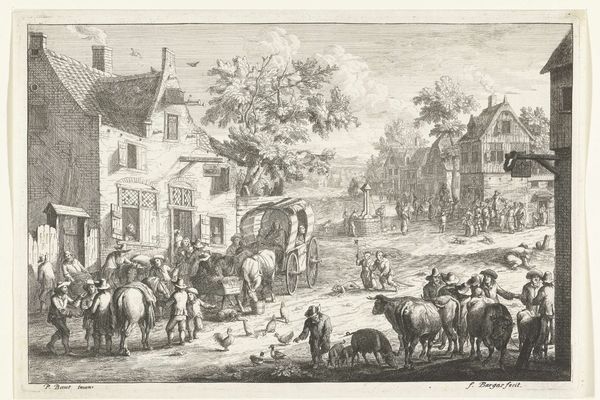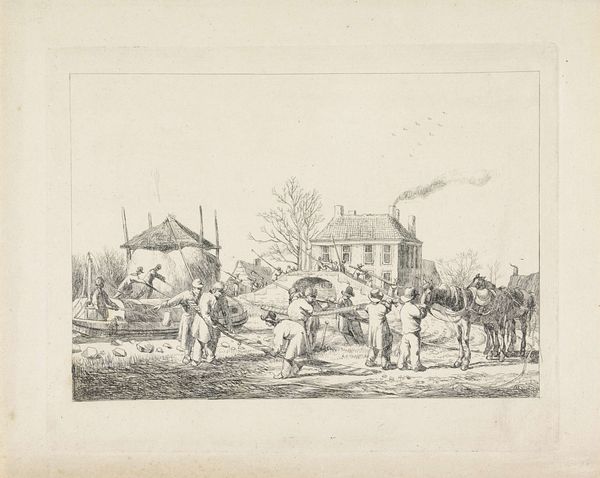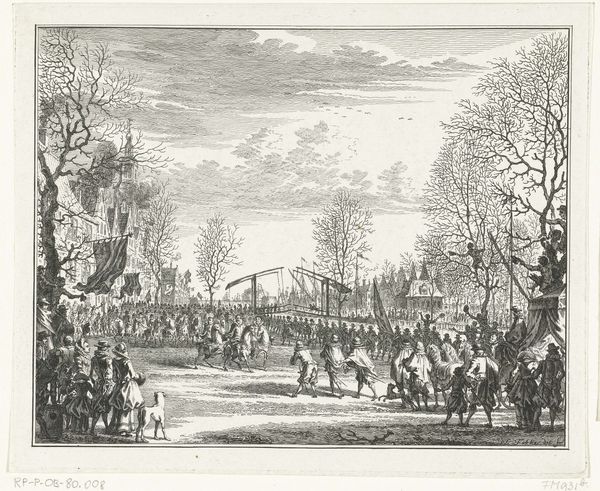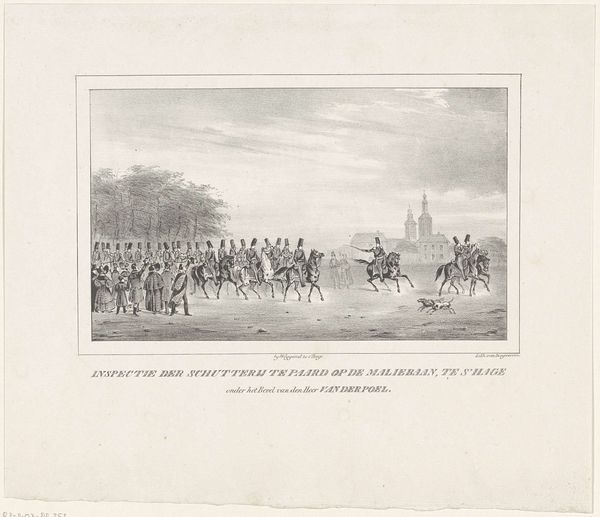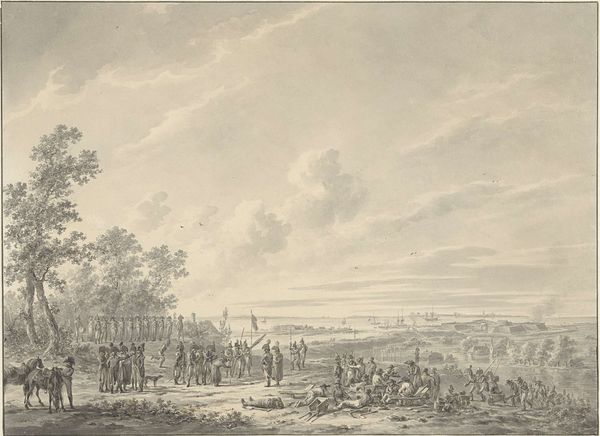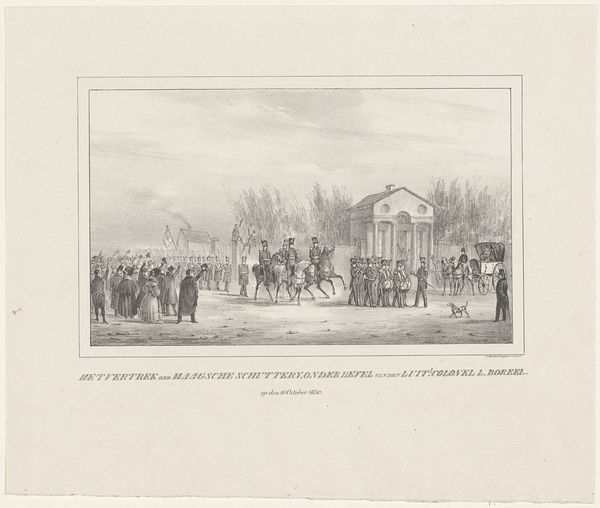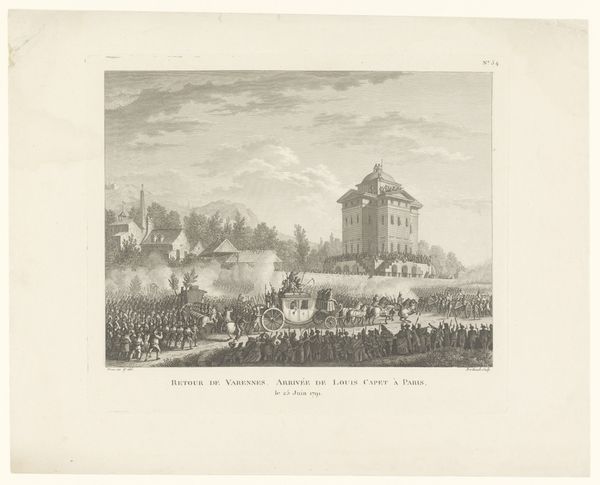
print, engraving
# print
#
pencil sketch
#
old engraving style
#
landscape
#
romanticism
#
cityscape
#
history-painting
#
engraving
Dimensions: height 202 mm, width 273 mm
Copyright: Rijks Museum: Open Domain
Curator: So here we have "Nederlandse troepen verlaten Brugge, 1830", or "Dutch Troops Leaving Bruges, 1830", an engraving by Jacques Sturm dating from around 1830-1831. Editor: Well, that’s a mouthful! My initial vibe? Controlled retreat… Or maybe it's reluctant departure? You see that stoicism etched onto the city skyline – even the windmill seems to sigh! Curator: It's quite Romantic in its depiction, wouldn’t you agree? The way Sturm uses line and composition draws the eye to the departing troops, but also the weighty presence of the city itself, solidifying its place. Notice also how the landscape features help frame this narrative! Editor: Definitely! Sturm gives us history unfolding through the sharp, controlled strokes of an engraving. Think of how many lines he carved to capture all those soldiers. The lines themselves almost convey tension—are those figures marching off into uncertainty? It is all wonderfully balanced. Curator: Sturm manages to capture the solemnity of the occasion without dipping into melodrama, though. It’s an engraving after all, which requires meticulousness. This print manages to create an objective record of an emotionally charged moment. Editor: True. And that windmill on the right acts as an amazing sort of metonymic device too. It signifies the everyday that’ll keep turning long after the troops have gone. You can say the choice of subject matter for Sturm gives insight to his beliefs about history and country. He almost turns buildings into persons in the grand theatre of this work. Curator: Precisely! Each carefully rendered structure adds another layer of semiotic density. A landscape becomes the theater for history, but more than this, it becomes the *memory* of history. I have changed my mind…it might be both stoic and romantic. Editor: It’s remarkable. It makes you consider just how much silent emotion can reside within rigid forms. I am starting to want to go back there. What more can you ask? Curator: Indeed! Thank you for taking the time to view it with me!
Comments
No comments
Be the first to comment and join the conversation on the ultimate creative platform.
